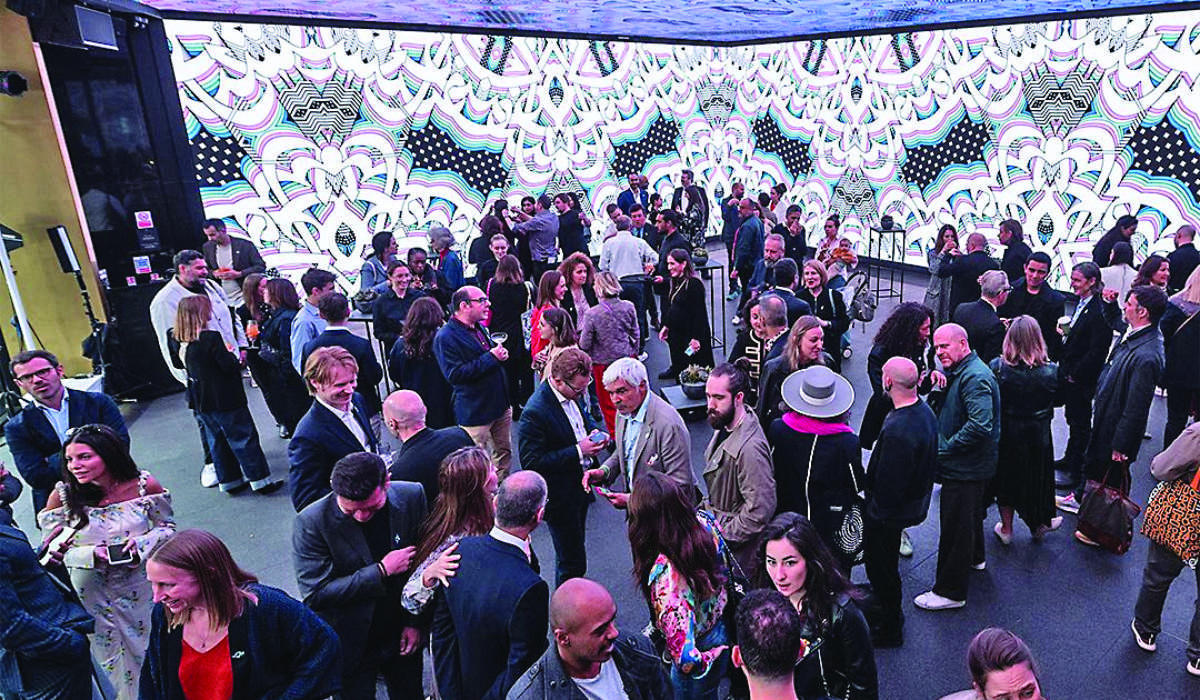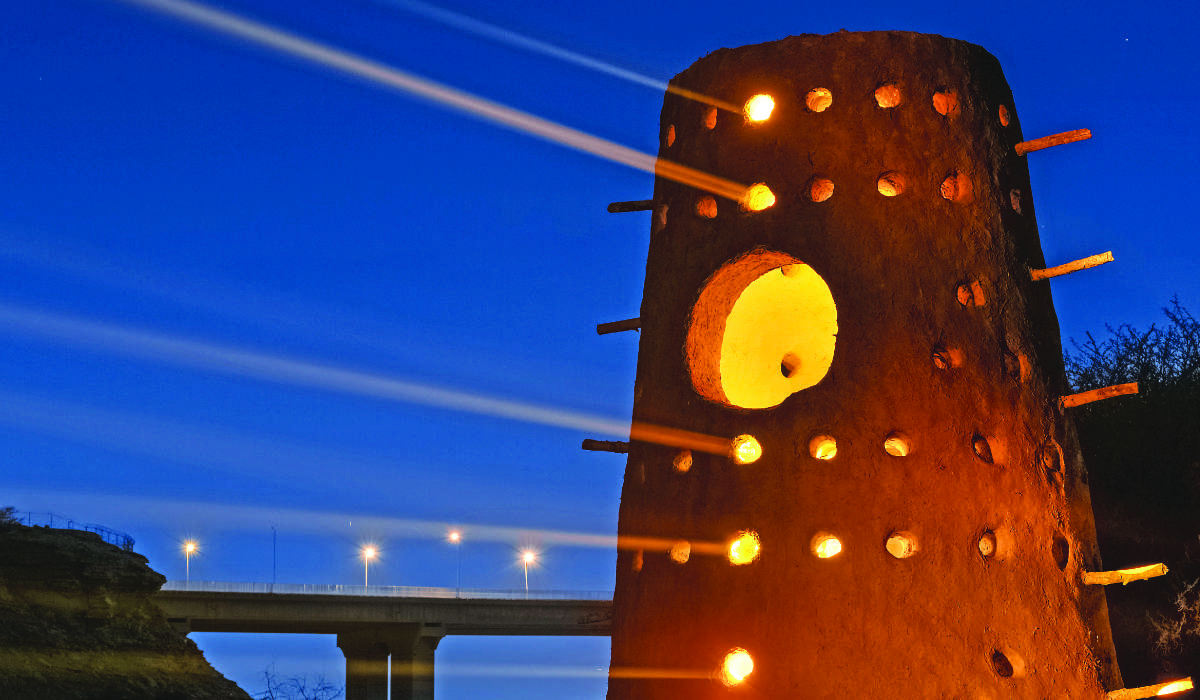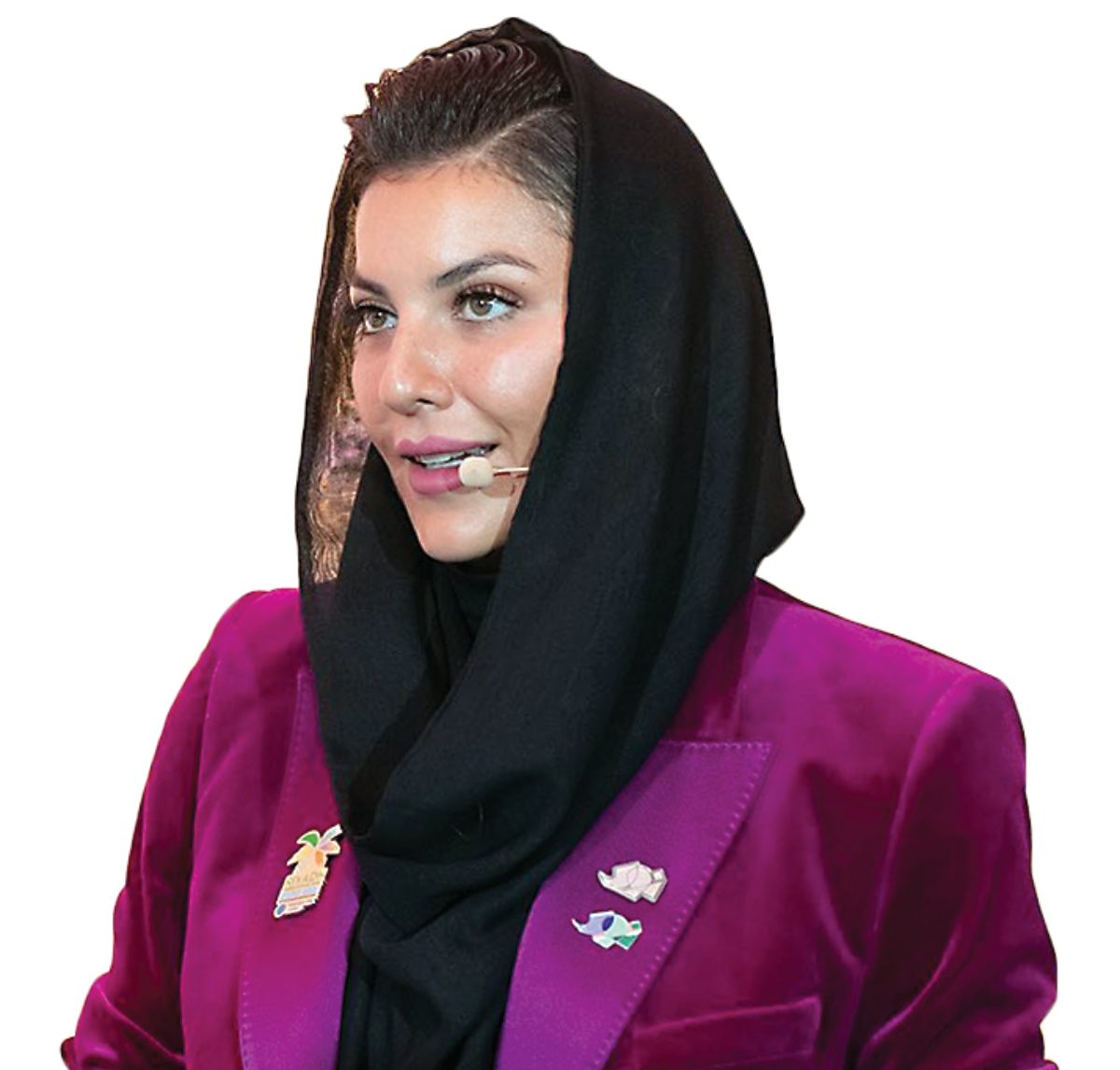RIYADH: Following its first showcase in 2021 during the COVID-19 pandemic, the beauty of Noor Riyadh has been its ability to bring art to not only the city of Riyadh, its various districts and neighborhoods, but to the Saudi populace.
Large-scale art installations produced by artists from Saudi Arabia, the greater Middle East and across the world can be found throughout the city of Riyadh during the festival. Viewing these artworks at night when they are illuminated becomes a way to discover the Saudi capital, neighborhoods and monuments many were unaware even existed, as well as find new artists, ways of thinking and cultures.
Noor Riyadh’s power, according to its directors and curators, lies in its ability to unite everyone, from all walks of life within the city, through alluring specially commissioned artworks.

London Launch of the 2023 noor Riyadh festival. (Supplied)
“One of the key components of the festival is to stage it everywhere in the city of Riyadh,” Miguel Blanco-Carrasco, adviser at the Royal Commission for Riyadh City and Riyadh Art, told Arab News.
“Our audience is very diverse. We are targeting people who are museumgoers and who have a profound interest in art, and those who would not regularly go to an art exhibition.”
Speaking about the significance of the event, he added: “Noor Riyadh is part of the creative transformation that is taking place in the Kingdom.

Ahaad Alamoudi’s ‘Ghosts of today and tomorrow.’ (Supplied)
“This year we concentrated all artworks in five main hubs to improve the visitor experience. We also have three works in other locations across Riyadh.”
Noor Riyadh will showcase artists from around the world working in diverse mediums, including performance art, architecture, engineering, graphic design, and even medicine.
The five main hubs are located throughout Riyadh, with the central hub situated in the King Abdullah Financial District, the Saudi capital’s preeminent destination for business and lifestyle, which recently witnessed the staging of the inaugural Riyadh Fashion Week.

‘Oasis’ by Belgian conceptual artist Arne Quinze displayed at the 2022 Noor Riyadh festival. (Supplied/ Instagram/noorriyadhfestival)
The third Noor Riyadh begins on Nov. 30 and runs until Dec. 16 under the theme “The Bright Side of The Desert Moon,” and explores the desert as a place of reconnection.
It will include 120 artworks by more than 100 artists from around 35 countries, including a significant representation of Saudi talents who comprise one third of participating artists.
Artworks include prominent pieces by Ange Leccia, Carsten Holler, Chris Levine, Dana-Fiona Armour, Diana Thater, Janet Echelman, Ivan Argote, Laurent Grasso, and Philippe Parreno, among others.
Community engagement remains a cornerstone of our festival. Our focus is on making art accessible and educational through various initiatives like talks, workshops, and school programs.
Nouf Al-Moneef, Noor Riyadh project manager
While the artist lineup has expanded, there are also several returning artists this year. These include Muhannad Shono, Rashed Al-Shashai, Bruno Ribeiro, Christopher Bauder, Studio Drift, Ahaad Alamoudi, and Zahra Al-Ghamdi.
Noor Riyadh’s curatorial team is just as diverse and multinational as its artist lineup and comprises both local and internationally renowned names. It is led by Jerome Sans and supported by curators Pedro Alonzo, Fahad bin Naif, and Alaa Tarabzouni.
Running concurrently to the festival is Noor Riyadh’s exhibition “Refracted Identities, Shared Futures.” It is being staged by Neville Wakefield who returns as lead curator, working alongside Maya Al-Athel, who served as artistic director of the festival in 2022.

Nouf Al-Moneef, Noor Riyadh project manager
The show, which runs until March 2, will include work by artists such as Abdullah Al-Othman, Ahaad Alamoudi, Conrad Shawcross, Farah Al-Qasimi, Julian Charriere, Kim Farkas, Mariko Mori, Rashed Al-Shashai, Sarah Brahim, and Sophia Al-Maria.
Noor Riyadh aims to help the art community as well as making the city an even bigger attraction.
Nouf Al-Moneef, project manager of Noor Riyadh and architectural adviser at the Royal Commission for Riyadh City, told Arab News: “Community engagement remains a cornerstone of our festival.
“Our focus is on making art accessible and educational through various initiatives like talks, workshops, and school programs.”
Among the noteworthy aspects of this year’s event is the diversity of its artistic representation, which, according to Al-Moneef, has increased this time.
She added: “Each year’s innovative theme has deeply resonated with the worldwide topical themes, fostering a dialogue that bridges local and global perspectives.
“A testament to the festival’s growing prominence is the record-breaking attendance in 2022, with 2.8 million attendees and six Guinness World Records (totaling eight over the years), highlighting the largest celebration of light art globally.”
The festival is also pushing various artistic mediums. “We are further exploring the intersection between art and technology,” explained Blanco-Carrasco. “We are seeing what we can do with drones that hasn’t been done before. How can we use this medium to attain new artistic abilities?”
Noor Riyadh is an initiative of Riyadh Art, dubbed one of the largest public art initiatives in the world, which was launched in March 2019 by King Salman, under the supervision of the Committee of Grand Projects chaired by the Crown Prince Mohammed bin Salman.
Riyadh Art was created “to foster local artistic talent and ignite Saudi Arabia’s cultural economy,” according to a statement.
The ambition and vision of Riyadh Art is to transform the Saudi capital into an inspiring “gallery without walls,” showcasing over 1,000 public artworks dispersed throughout the city through 10 programs and two annual events.
“Through Riyadh Art, we’re bringing art directly into the everyday lives of citizens and visitors by integrating public art installations throughout the city,” said Al-Moneef.
“This approach not only makes art more accessible to a wider audience but also embeds it into the very fabric of the city, transforming public spaces into areas of inspiration and conversation.”
Noor Riyadh’s editions have offered “unique moments of joy” for millions of residents and visitors to the Saudi capital. The festival gives visitors the chance to view Riyadh in a new light and appreciate its ever-evolving landscape and great history.
For more details, visit riyadhart.sa.









































